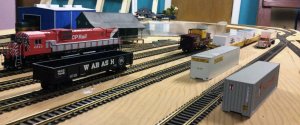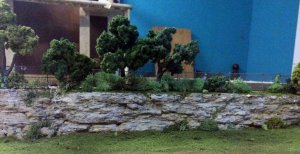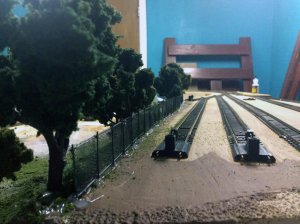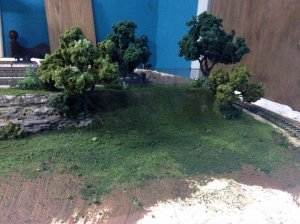paper-tiger
Member
Crime Scene Investigation: Train Table From Heaven
Hello, all! I'm a newcomer to the forum and to the hobby, but I have very swiftly learned that you are a friendly community interested in a challenge and willing to help. The following is from a train table that I snatched up from the local non-prof secondhand store. I saw it and was absolutely flabbergasted by the resale price. (The extended story is on the blog entry at http://www.paper-tiger.org/2014/11/08/train-table-from-heaven/) I recognized that it was an incredible HO scale layout that was uncannily similar but ultimately superior to what I was attempting at the time, but I didn't really know what it was. I still don't understand and can't really make it run until I do. If anyone could help me understand what is going on with this, I would love it. I know third-hand that the man who donated it built it in 6th grade and had no children or grandchildren interested in it, so he gave it away. I have attempted to find him through the non-prof that sold it, local classifieds, and the local websites with no luck so far.
I talked to a local (ie: 2 hour drive one-way) hobby shop dealer about it and bought an older DC controller module which allowed me to connect it in a way that got certain parts of the layout working if I had the right combination of switches, but... I'm lost. I would seriously appreciate some help. FB, my blog and local contacts have netted me zero leads. Other than that mystery figure who donated this amazing base layout, I am the only model railroader I know of in the region, and I'm a total newbie. I'll take pictures of anything you want. Your help would be desperately appreciated!!!
And my further apologies, my photos are too hi-res for the forum to accept remotely, it seems, so I must link.
http://www.paper-tiger.org/2014/11/08/train-table-from-heaven/
It's so beautiful... The hills between tracks are too extreme to create a scenic countryside layout from, but it might be a really nice "urban" scene with the right artistry... I just... I saw that it was a gem, but I don't know its real potential. Help me, Sherlock Holmes, please?
(If you want a pic or video of something you don't see here, tell me about it and I will (try to) make it happen. In video or stills as required... I currently have it connected to a vintage DC controller that works 3/4 of the way around as long as I have everything set to 'Cab A'... Pretty sure that's just luck. Finding the creator would be a gold mine!)
I have no idea what's going on here, and I would love to. You know just by looking at it. Please help!
Hello, all! I'm a newcomer to the forum and to the hobby, but I have very swiftly learned that you are a friendly community interested in a challenge and willing to help. The following is from a train table that I snatched up from the local non-prof secondhand store. I saw it and was absolutely flabbergasted by the resale price. (The extended story is on the blog entry at http://www.paper-tiger.org/2014/11/08/train-table-from-heaven/) I recognized that it was an incredible HO scale layout that was uncannily similar but ultimately superior to what I was attempting at the time, but I didn't really know what it was. I still don't understand and can't really make it run until I do. If anyone could help me understand what is going on with this, I would love it. I know third-hand that the man who donated it built it in 6th grade and had no children or grandchildren interested in it, so he gave it away. I have attempted to find him through the non-prof that sold it, local classifieds, and the local websites with no luck so far.
I talked to a local (ie: 2 hour drive one-way) hobby shop dealer about it and bought an older DC controller module which allowed me to connect it in a way that got certain parts of the layout working if I had the right combination of switches, but... I'm lost. I would seriously appreciate some help. FB, my blog and local contacts have netted me zero leads. Other than that mystery figure who donated this amazing base layout, I am the only model railroader I know of in the region, and I'm a total newbie. I'll take pictures of anything you want. Your help would be desperately appreciated!!!
And my further apologies, my photos are too hi-res for the forum to accept remotely, it seems, so I must link.
http://www.paper-tiger.org/2014/11/08/train-table-from-heaven/
It's so beautiful... The hills between tracks are too extreme to create a scenic countryside layout from, but it might be a really nice "urban" scene with the right artistry... I just... I saw that it was a gem, but I don't know its real potential. Help me, Sherlock Holmes, please?
(If you want a pic or video of something you don't see here, tell me about it and I will (try to) make it happen. In video or stills as required... I currently have it connected to a vintage DC controller that works 3/4 of the way around as long as I have everything set to 'Cab A'... Pretty sure that's just luck. Finding the creator would be a gold mine!)
I have no idea what's going on here, and I would love to. You know just by looking at it. Please help!





